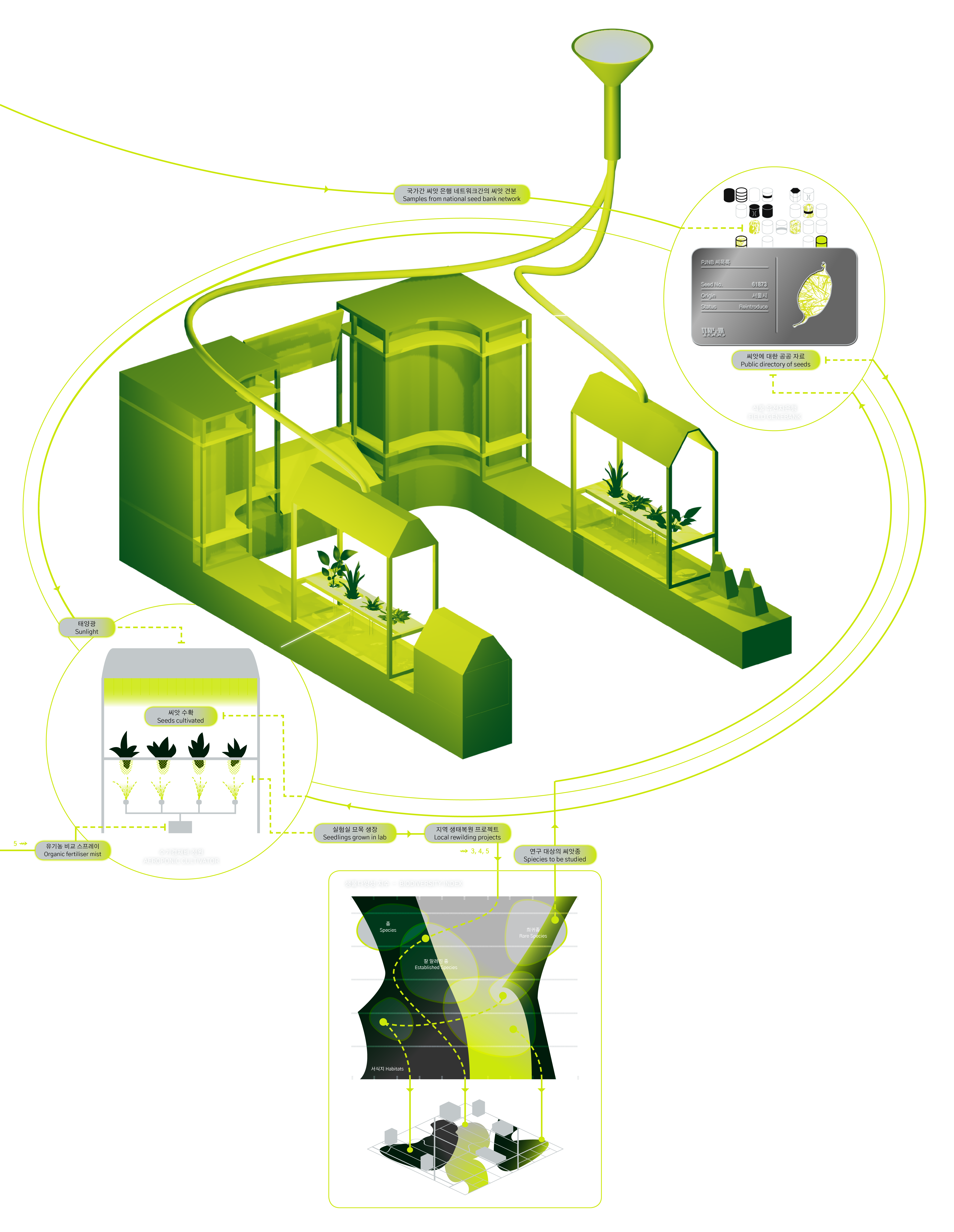2.1 Subterranean Lab
A common type of urban space across Seoul is the basement atrium, they can be found underground connected to offices and metro stations. Usually they are built from concrete coated with imitation rock facades and are either empty or filled with plastic plants, although the Jonggak Solar Garden [1] is an example of a more organically active space. Important to note is their natural state of darkness, which Jonggak gets around by adding solar focusers to allow plants below the surface to experience a natural daylight cycle. This space has three functions:
2.2 Biodiversity Index Monitor
The core function of this proposed PoJangNongBang augmentation is as a Biodiversity Index Monitor [2,3,4]. It is the center of species variety data collection in the bioregion as well housing several methods of increasing the number. First off, a digital platform allows cataloging of images, text and sound collected by citizens which can include sightings of rare species as well as changes in habitat information. The digital platform facilitates this by offering rewards in digital currency for completing such tasks [5]. The Biodiversity Index Monitor also employs full time staff to operate its’ digital and physical aspects.
2.3 Field Genebank
The first of these employees is responsible for care of the Field Genebank [6]a seed bank which houses rare or biodiversity supporting species of plant waiting to be reintroduced to the bioregion. Stored in the cooler subterrain environment these range from pollinator attracting flowers to heritage shrubs and fruit trees. Visitors can also store and collect seeds [7] to sow.
2.4 Aeroponic Cultivator
The second employee is working an aeroponic setup which allows for cultivation of the heritage seeds and manual germination to harvest more seeds. This system uses fine mist packed with nutrients to grow seedlings without soil and with much less water than conventional growing. Fledgling plants can also be transplanted [8] to identified locations in the bioregion that are lacking in biodiversity.
References
[1] Jonggak Solar Garden
[2] Biodiversity
[3] Biodiversity Index
[4] Biodiversity Index
[5] Questa
[6] Field Genebanks
[7] Seed Boutique
[8] Transplanting

